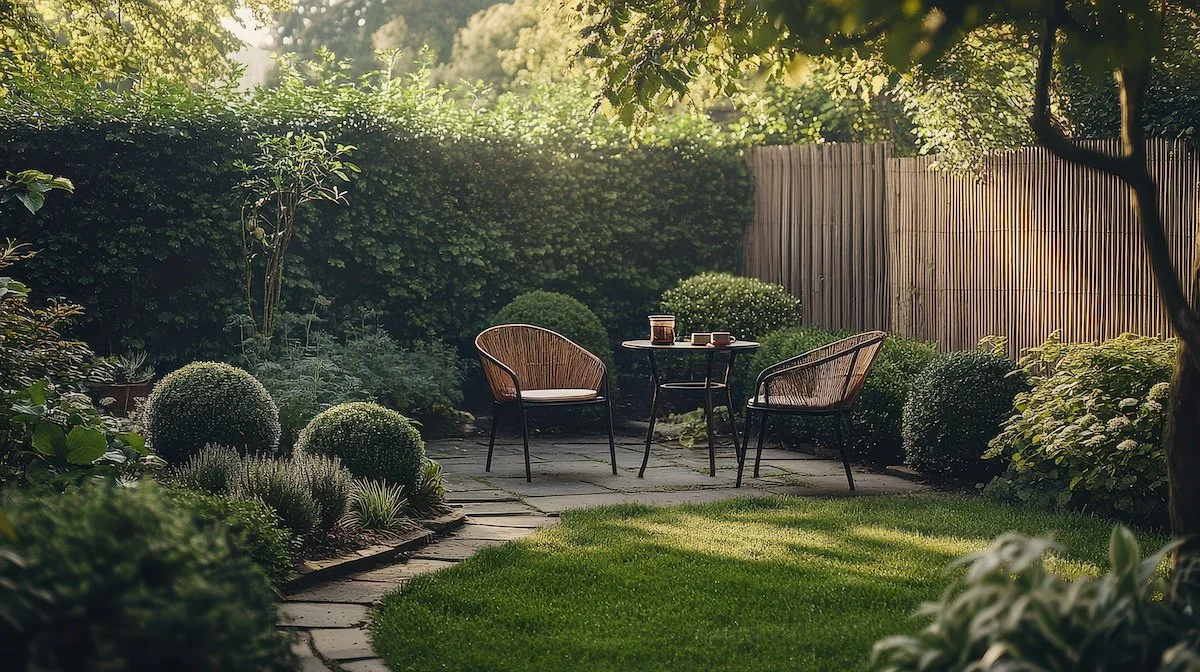How To Design An Outdoor Oasis For Mental Clarity
These days, it’s hard to find a quiet moment. Between nonstop messages, crowded schedules, and the pressure to always be doing something, mental clarity can feel out of reach. But you don’t need a weekend retreat to reset. Sometimes, all it takes is stepping into a space that’s built to give you room to think.
Your outdoor space can be more than a yard. When it’s designed with intention, it becomes a place where your mind can slow down.
Give Your Space a Clear Role
Start by deciding what the space is for. Is it where you sit and think? Stretch out? Read without distraction? When a space doesn’t have a purpose, it often ends up cluttered both visually and mentally. Giving it a clear role makes the rest of the design easier.
Use simple features to define zones. That might be a few pavers that mark out a sitting area or a gravel patch tucked away for quiet. Large outdoor planters can help carve out these zones naturally. They bring in greenery while doubling as soft dividers. When placed well, they reduce the need for fences or bulky screens.
Your space doesn’t need to do it all. A single purpose gives it structure. It also makes the area feel more usable. A focused space draws you in and keeps you coming back. You’ll start to rely on it without even realizing it.
Let Materials Do the Work
Not all surfaces are the same. Some need regular maintenance. Others get too hot to walk on. A few hold up better over time. What you use underfoot affects how the space feels, season after season.
Wood adds natural warmth and holds up well with the right care. Stone stays cool and grounded. Concrete works if it’s softened by plants or paired with textured elements. Choose finishes that feel easy and don’t compete with the rest of the yard. Even a few simple material changes can make a big difference.
Surfaces should support your habits. The less you have to maintain, the more time you’ll spend enjoying the space. That balance is what makes outdoor living feel effortless.
Let Plants Be Support, Not the Star
A few healthy plants can go a long way. You don’t need to build a garden to find peace. Too many plants can become another thing to manage. Choose ones that work well in your climate and don’t need daily care. The right mix adds softness without becoming a chore.
Stick to plants that hold their shape and don’t spread too fast. Native grasses, small shrubs, and low herbs work well. They bring color and texture without turning the space into a full-time job. A tidy, well-kept look doesn’t have to mean constant pruning. It should feel relaxed, not overgrown.
Plants should frame the space, not take it over. They can guide your eye, invite a little movement, or attract birds now and then. The best ones do their job quietly in the background. It should always feel like a place to unwind, not a project waiting to be finished.
Choose Furniture You’ll Actually Use
Comfort matters more than looks. A stylish chair isn’t worth much if it’s uncomfortable. Outdoor seating should be something you look forward to using. Choose furniture that supports your body and stands up to the elements. Start with comfort, then think about how it fits the space.
Keep things simple. Two solid chairs and a table are more than enough. A lightweight stool you can move around adds flexibility. You don’t need to fill the area to make it feel complete. A few useful pieces are better than a crowded setup.
Look at how the furniture sits within the layout. It should be easy to move around and not block foot traffic. Stick to neutral materials that age well and don’t go out of style. When everything fits, the space feels more natural to use. That’s what makes you come back to it.
Work With the Light You Have
Light changes everything. If your space is shaded, embrace it. If it gets a lot of sun, add spots where you can cool off. Don’t fight the light. Make the most of what you already have and use it in ways that support your routine and help boost your mood.
Use shade sails, climbing plants, or fabric panels to soften harsh sunlight. A tree canopy can be more useful than an umbrella when placed well. If you enjoy the light in the early morning or late afternoon, plan your seating around those times. Let your routine guide the setup. That way, the space becomes part of your daily rhythm.
You don’t need to light the whole yard. Focus on the areas where you spend the most time. A few well-placed lights are better than too much brightness. When the lighting supports your habits, everything works better.
Add Quiet Movement
Stillness is valuable, but subtle movement helps, too. Gentle motion keeps a space from feeling static. It gives your eyes something soft to follow. Even slight movement adds life to the space.
Tall grasses that sway in the wind. A wind chime in the corner with a low, steady tone. A small water feature that ripples quietly. These elements bring calm without being distracting.
Let the space breathe. A little motion keeps it from feeling flat. That natural rhythm helps slow down your thoughts. It reminds you that the space is alive. That reminder can be surprisingly grounding.
Make the Edges Count
Edges matter more than most people think. They define the space and make it feel more finished. Without them, the yard can look scattered or messy. Clean lines help the space feel more grounded.
Use raised beds, border stones, or a row of planters to frame different areas. These small additions help keep the layout organized. They create a sense of structure without feeling forced. Even the simplest materials work when placed with intention.
Clear edges also make the space easier to care for. A tidy border keeps weeds out and paths clear. And when the edges feel under control, the entire space feels more relaxing.
Give the Eyes a Place to Land
Every space needs a visual anchor. Without one, the eye doesn’t know where to go. A yard with too many details can feel overwhelming. One steady feature helps keep things in check.
It could be a large plant, a small bench, or a low stone bowl. Choose something that draws attention without shouting. The rest of the layout can then be built around that feature. It gives the yard a center without needing a big statement.
This kind of visual rest helps your mind settle, too. When your eyes have somewhere to land, your thoughts slow down. A small focal point can bring quiet to the entire space.
Create a Flow That Fits Your Habits
Design the space around how you actually use it. If you drink coffee outside in the morning, make room for that. If you like to be out in the evening, plan your layout with that in mind. Don’t design for a version of life you don’t live.
Think through how you move around. Where do you walk? Where do you stop? What gets in your way? Small layout changes can make everyday use easier and more enjoyable.
The best setups feel easy and natural. They work without needing constant adjustments. When a space fits your routine, you’ll use it more often without even thinking about it.
Keep Clutter Out of the Picture
Visual mess leads to mental mess. A yard filled with hoses, tools, or leftover projects can feel more like a chore than a place to relax. If you want clarity, start by clearing out what doesn’t belong.
That doesn’t mean hiding everything out of sight. It means giving items a proper place. Storage benches, hooks inside a shed, or a lidded bin can help keep things tidy. When tools and gear have a home, they stay out of the way. That level of order makes the space easier to enjoy day after day.
Add One Thing That Grounds You
Some elements carry more meaning than others. A chair you always sit in. A view you return to. A plant with a personal story. These small details can connect you to the space in a deeper way.
They don’t need to be big or decorative. They need to feel familiar. That one thing can bring more comfort than any trend or design feature. It turns the yard into a place that belongs to you. Even something small can hold a lot of value when it means something to you.
Let the Space Grow With You
No outdoor space stays the same forever. Your needs change, and so do your routines. The way the light hits different areas may shift with time. The space should be able to adjust with you.
Keep the layout flexible. Move furniture when you need to. Try new plants or remove the ones that aren’t working. Don’t be afraid to change things up. That flexibility makes the space feel alive, not stuck.
Final Thoughts
Mental clarity often comes from having fewer distractions and more intention in the spaces you use. When your outdoor area feels natural, comfortable, and aligned with how you spend your time, it becomes something you naturally lean on. A few thoughtful choices can turn even the simplest space into a quiet part of your day. Design it with care, use it often, and let it become part of the way you reset.







